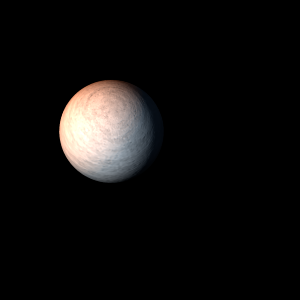|
|
Space Astro
|
Info for exoplanet "Pyanfu"
| Scientific (actual) data |
|---|
| Name | HAT-P-15 b |
| Planet status | Confirmed |
| Planet mass | 1.946 |
| Radius | 1.072 |
| Orbital period | 10.8635 |
| Semi major axis | 0.0964 |
| Orbit eccentricity | 0.19 |
| Inclination | 89.1 |
| Angular distance | 0.000507 |
| Discovered | 2010 |
| Updated | 2018-12-17 |
| Omega | 262 |
| Tzero tr | 2454640 |
| Publication | Published in a refereed paper |
| Detection type | Primary Transit |
| Star name | HAT-P-15 |
| Right ascension | 66.25° |
| Declination | 39.46° |
| Mag v | 12.16 |
| Star distance | 190 |
| Star metallicity | 0.22 |
| Star mass | 1.013 |
| Star radius | 1.08 |
| Star sp type | G5 |
| Star age | 6.8 |
| Star temperature | 5568 |
| Wikipedia article | HAT-P-15 b |
Back
| |
| Fictional info (?) |
|---|
| Suggested name | Pyanfu |
| Planet type | Warm gas giant |
| It is a warm gas giant planet with a mass one-thousandth that of HAT-P-15, but two-and-a-half times that of all the other planets in its solar system combined.
The atmospheric pressure at the planet's surface is 15 bar, or roughly the pressure found 450 m under the oceans of Earth. |
| Atmosphere | Krypton | 48% |
| Ethane | 22% |
| Hydrogen peroxide | 18% |
| Ozone | 12% |
| Hydrogen deuteride (HD) | 0.15% |
| Atmospheric pressure | 15 bar |
 |
| No known satellites |
| Google search for Pyanfu |
|
Website by Joachim Michaelis
|
|
|
|